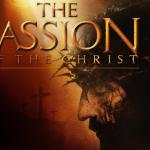What one factor accounts for the indifference so many Americans harbor toward the church?
Forced to pick just “one factor” among many, The Guy says fading cultural respect — for committed Christians, for Christian churches, and for Christianity.
Begin with some hard data. As Religion Q and A analyzed last October 19, the collective membership of America’s moderate to liberal “Mainline” Protestant denominations has gradually fallen by a third since the mid-1960s, an unprecedented slide. These churches were once at the center of the culture. During that era the Catholic Church continued to grow (thanks substantially to immigrants) as did groups of conservative and “Evangelical” Protestants, who now outnumber “Mainliners.” But take a closer look.
On paper, U.S. Catholicism claims 77.7 million adherents, 22 percent of the population. However, that counts all those baptized as infants, many no longer active. A 2008 Georgetown University survey found that only 55 percent of those calling themselves Catholic say they practice the faith.
The largest U.S. Protestant body, the conservative Southern Baptist Convention, enjoyed years of expansion while the Mainline declined. But as of 2012 the S.B.C. reported its sixth straight year of membership decline (to 15.9 million). Worse, average worship attendance was down 3 percent in just one year (to just under 6 million). Baptisms of youths and adults declined in six of the past eight years; the 2012 total (314,956) was the lowest since 1948. Other conservative groups still gain but that suggests future problems beyond just the S.B.C.
(Though Gene asks about churches, a 2013 Pew Research survey of American Jews showed only a third belong to a synagogue, 23 percent don’t believe in God, and 62 percent say being Jewish is mostly about ancestry and culture vs. only 15 percent who think it’s largely a matter of religious belief.)
Read the rest here















